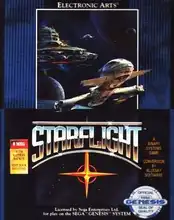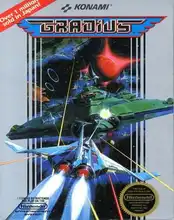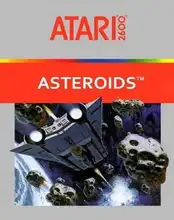Remember the days when firing up your PC meant strapping into a virtual cockpit, ready to explore vast nebulae or engage in frantic dogfights? For a certain generation of gamers, Space Flight Games weren't just a genre; they were an escape hatch to adventure among the stars. While modern space epics dazzle with graphics, there's a unique charm, a tactile satisfaction, that belongs squarely to the classic era.
These weren't games you played with a simple gamepad. Oh no. These demanded a joystick – a chunky, often beige piece of hardware that felt like a genuine connection to your on-screen vessel. The weight, the resistance, the satisfying thwack of the buttons... that was part of the experience.
If you're building a retro rig, dusting off an old flight stick, or just curious about the roots of interstellar gaming, you've come to the right place. Let's warp back to a time when pixels painted galaxies and skill with pitch, roll, and yaw meant the difference between glory and floating debris.
Why Retro Space Flight Games Still Matter
Beyond the rose-tinted glasses of nostalgia, classic Space Flight Games offered something special:
- Pure Simulation: Many focused heavily on realistic flight mechanics (within the bounds of sci-fi, of course), requiring actual piloting skill.
- Immersive Worlds: Despite technical limitations, games built rich universes through detailed lore, compelling characters, and branching narratives.
- The Joystick Connection: As mentioned, they were designed for dedicated controllers, offering a level of physical interaction often missing today.
- Challenging Gameplay: Forget hand-holding; these games often demanded patience, strategy, and quick reflexes.
The Golden Age of PC Space Sims
Roughly spanning the late 80s through the early 2000s, this period saw an explosion of innovation in the genre. Developers pushed the limits of graphics, AI, and storytelling, delivering experiences that kept players glued to their monitors for hours.
Essential Classic Space Flight Games to Revisit
Ready to launch? Here are some absolute must-plays that defined the era and are still worth your time today. Many are readily available digitally, often pre-configured for modern systems.
Wing Commander Series (1990-1997)
Origin Systems basically invented the cinematic space opera genre with Wing Commander. You weren't just flying a ship; you were a rookie pilot thrust into an epic war against the Kilrathi.
- Why it's classic: Full-motion video cutscenes (revolutionary at the time!), memorable characters (hello, Mark Hamill!), and engaging dogfighting action. The progression through ranks and ships felt incredibly rewarding.
- Joystick Feel: Perfect. Designed for flight sticks, controlling your Hornet or Broadsword felt natural and responsive.
- Where to find it: GOG.com has bundles of the classic games, often patched to run smoothly via DOSBox.
Star Wars: X-Wing & TIE Fighter (1993-1994)
LucasArts didn't just slap the Star Wars name on a game; they created arguably the best licensed flight simulators ever made. X-Wing put you in the cockpit of Rebel Alliance craft, while TIE Fighter let you experience the war from the Imperial side (a groundbreaking concept!).
- Why it's classic: Authenticity. From the sounds and music to the ship models and mission briefings, it felt like you were really there. Complex power management added a strategic layer to combat. TIE Fighter is often hailed as the peak for its mission design and unique perspective.
- Joystick Feel: Essential. Managing shields, weapons, and engines while maneuvering was intuitive with a good stick.
- Where to find it: GOG.com offers updated collector's editions that run on modern Windows.
Freespace Series (1998-1999)
Developed by Volition, the Descent: Freespace games were visually stunning for their time and featured a gripping, dark storyline involving ancient, powerful alien races.
- Why it's classic: Incredible graphics (for the 90s!), dynamic mission objectives, and large-scale battles with capital ships and swarms of fighters. The story was top-notch sci-fi.
- Joystick Feel: Excellent, with precise control over combat maneuvers.
- Where to find it: Available on GOG.com and Steam. The community-driven Freespace 2 Open project continues to update the engine and create new content.
Elite / Frontier: Elite II (1984 / 1993)
Okay, Elite is really retro, but its influence is undeniable. Frontier brought its open-world trading and exploration concept into the 90s with cutting-edge (at the time) procedural generation.
- Why it's classic: True open-world freedom. You could be a trader, pirate, miner, or bounty hunter. The scale felt immense. Frontier added realistic Newtonian physics.
- Joystick Feel: While keyboard was possible, a joystick made navigating hyperspace and docking much smoother.
- Where to find it: Elite is available on Archive.org. Frontier: Elite II can also be found via abandonware sites (use caution) or sometimes included as extras with Elite Dangerous.
Getting These Classics Running Today
The good news is you don't need a dusty 486 to play many of these gems.
- GOG.com: Your best friend for legally acquiring and easily running many classic Space Flight Games. They often include DOSBox or other wrappers pre-configured.
- Steam: Also hosts some classics, often with similar modern compatibility efforts.
- DOSBox: For games not readily available, learning to use DOSBox is key. It emulates the old DOS environment needed to run these games.
- Archive.org: A fantastic resource for legally downloadable abandonware titles, though getting them running might require more technical know-how (like using DOSBox).
The Joystick Question
While you can play some of these with a keyboard or modern gamepad, the intended and most satisfying experience is with a flight stick.
- Original Hardware: If you have old gameport joysticks, getting them to work on modern PCs requires adapters (like USB converters) and can be finicky.
- Modern Sticks: USB flight sticks are readily available today and work well with most emulated or re-released classic titles. You might just need to map controls.
Beyond the Cockpit: Trading and Exploration
While combat was often the focus, many classic Space Flight Games blended genres. Games like Elite and Wing Commander: Privateer added deep trading, mining, and exploration loops, offering a different pace and objective beyond just blowing stuff up. This added replayability and depth to the simulated universe.
Conclusion
The call of the void remains strong, and thankfully, the golden age of Space Flight Games is far from over. Whether you're revisiting old favorites or discovering them for the first time, these classic titles offer deep gameplay, immersive worlds, and that unique, satisfying feeling of piloting your own starship with a trusty joystick in hand. So fire up your engines, check your shields, and launch into some timeless interstellar adventure!
FAQ
Q: Do I absolutely need a joystick to play these games? A: While some games might technically allow keyboard play, they were designed with joysticks in mind. For the most authentic and enjoyable experience, a flight stick is highly recommended.
Q: Are these games very difficult? A: Many classic space sims had a steeper learning curve than modern games, requiring you to learn controls, power management, and tactics. However, with patience, they are incredibly rewarding.
Q: Where is the best place to buy these classic games? A: GOG.com is generally the easiest and most reliable source for legally acquiring classic space games that are pre-configured to run on modern systems.
Q: Can I play these on a modern PC? A: Yes! Most classics available on GOG or Steam are patched or bundled with emulators (like DOSBox) to run on modern Windows. For others, you might need to set up DOSBox yourself.



